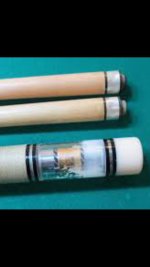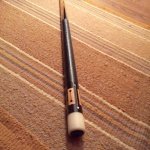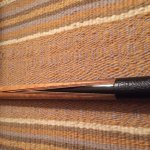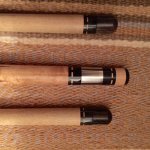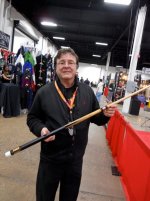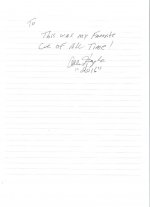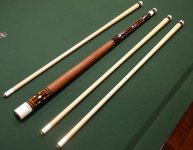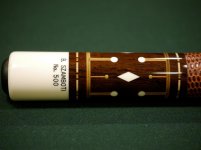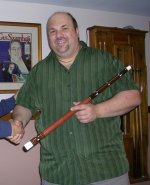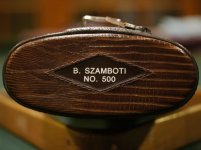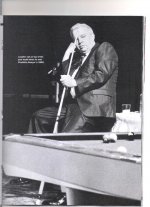Luther Lassiter's Cue
VERY NICE! Thanks for sharing that. A very unique design.
Thank you, Travis, I appreciate it. By the way, your Joss collection belongs in any historic cue thread, up to you what to show. They were made when the makers did it largely by hand.
Now, on to today's post, the cue of Luther Lassiter. Over the years of AZ, there has been tremendous chatter on what Lassiter's cue was, who had seen it, and of course, nobody ever had a picture of it. There were several cues, of course.
The cue below, I can tell you, is what Lassiter used largely, from the late 60s to the early 80s. This was the cue he used to defeat Eddie Taylor at my high school in 1967, Oxon Hill high school, Maryland, organized by the late Red Jones and Bill "Weenie Beanie" Staton. You already know Weenie Beanie, but you may not know that Red Jones was an Air Force Colonel, manning the Air Force desk at the White House in the 60s. He was also a pool enthusiast.
This was also the cue Lassiter used in the legends tournaments in Atlantic City, Harrah's in 1982, and the Claridge, in 1983. He used a different Bushka-apparent cue in Lake Kamiesha New York in 1984, when he lost to Jimmy Moore. Luther won in 1983. Mosconi won in 1982, with his famous Bushka.
Now, onto the cue. It looks Bushka, doesn't it? Or, does it? The first time I put this picture up, John Showman opined that it looked more like a Tad. I can't necessarily disagree with that, given the white ring above the buttsleeve. It has Bushka rings in the joint collars, which was not usual for Tads, but a few did have them. Maybe Luther asked for them? Or maybe it's a Bushka, as some think?
I know some other threads have come up on Lassiter's cue, with a plain four point cue, with obviously very little play. But if you've been around, you know this cue is the one he mostly played with. I wonder, where is it? Did his brother or family sell it? Does the remaining family still have it? Maybe the cue that won more nine-ball and straight pool matches combined than any other cue in history.
All the best,
WW
